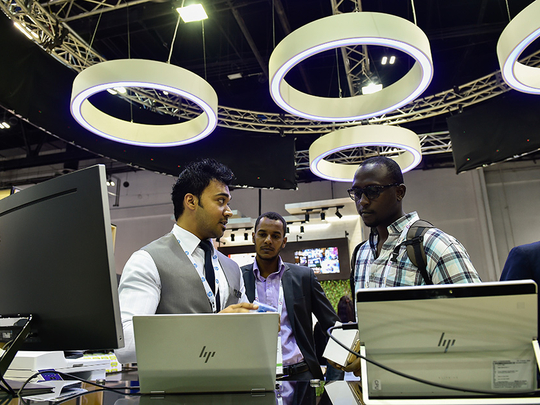
Dubai: Information technology spending in the UAE is expected to grow to $7.3 billion (Dh26.81 billion) this year compared to $7.2 billion.
With telecoms services, the total spend is going to be $15.7 billion this year compared to $15.5 billion last year.
“The emergence and increasing traction of so-called ‘innovation accelerators’ such as the Internet of Things (IoT), robotics, cognitive systems, virtual reality, next-gen security, and 3D printing will both disrupt and boost this spending on the third platform [mobility, cloud, big data analytics and social business],” said Jyoti Lalchandani, group vice-president and managing director responsible for the for the Middle East, Turkey and Africa (Meta) region at the International Data Corporation (IDC).
He said that digital transformation initiatives will top the chief information officer’s agenda as emerging technologies are increasingly leveraged in an effort to drive desired business outcomes. A lot of these new emerging technologies are now only maturing but there are already seeing some use cases.
He said that what’s really driving the spending is in the cloud (software as well as infrastructure side), security and Big Data analytics.
“Companies, in a bid to improve operational efficiencies and reduce costs, are moving to cloud while security is getting lot of traction but they still have a lot to do. We are seeing a lot of pressure from business users to use analytics to compete more effectively and launch new products,” he said.
The spending for public cloud in the UAE is expected to reach $114 million compared to $89 million last year.
“It [spending] is expected to be even more as public cloud providers set up data centres in the region. The public cloud spending is going to increase in double digits in the next few years. It is not only seen by big companies but also small- and medium-sized businesses.
“We see them invest in collaborative applications, customer relationship management (CRM), application services and infrastructure services,” he said.
Overall spending growth in IT this year is coming from software (5 per cent) and IT services (7 per cent) while infrastructure spending is expected to decline by 4 per cent year-on-year.
Moreover, he said that organisations have put off infrastructure spending as they are leveraging cloud.
By 2018, at least half of global IT spending will be cloud based, reaching 60 per cent of all IT infrastructure and 60-70 per cent of all software services, and technology spending by 2020.
He outlined five trends — cloud, Big Data analytics, innovation accelerators, security and Smart City initiatives — that are expected to shape the region’s investment landscape.
He added that there are a lot of emerging technologies for companies, such as IoT where we see use cases in a range of sectors, strong focus from government on innovation such as 3D printing, blockchain, cognitive technologies (chatbox and facial recognition) and artificial intelligence (AI).
“Key sectors such as banking and financial services, transportation, utilities and government are now trying to integrate some of these technologies in managing the customer expectations and enhancing the customer experience,” he said.
Among the challenges, he said that the overall economic environment and SMEs are quite affected by the slowdown in economy.
The other is the shortage of skills for the emerging technologies and the VAT is going to increase the overall cost of doing business.
“The line of businesses are going to put a lot of pressure on CIOs [chief information officers] because they need to use leverage technologies a lot faster and IT departments are under pressure to match expectations,” he said.










